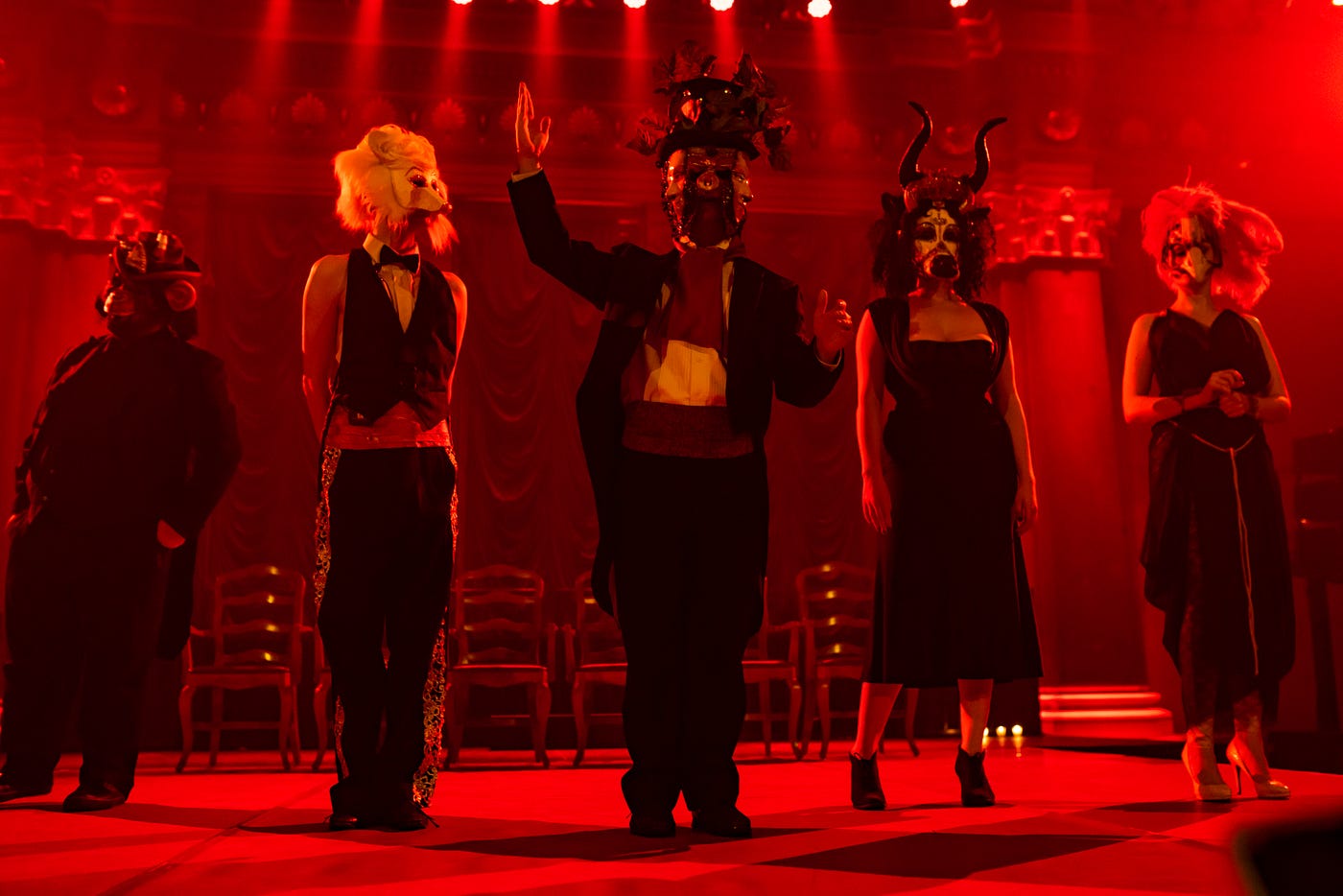
When I was in elementary school, I was obsessed with gorillas. Specifically, I was obsessed with saving them from extinction. I saw myself as the gorilla equivalent of Jane Goodall — albeit a fourth grade version — and went on a one-woman mission to ensure the survival of the species. I checked out every book the local library had that was even tangentially related to gorillas. I badgered my bewildered parents into recycling to prevent deforestation. And I saved up my allowance money and meagre earnings from several summertime lemonade stands to “adopt” a baby gorilla from a wildlife charity. I was an environmental crusader in a uniform of dirty jeans and slogan-covered t-shirts, all ones I begged my mom to buy me out of the National Geographic catalogue.
Despite haranguing my classmates about conservation at every opportunity, my crusade never gained much traction. My experience taught me an important lesson: without money or connections, it’s very difficult to successfully champion a cause. No matter how meaningful or important that cause is, whether it’s protecting gorillas or achieving peace in the Middle East, you almost always need powerful allies with deep pockets to make things happen. This fundamental truth is the idea behind The Illuminati Ball.
In this immersive play, our role as audience members is as candidates for the Illuminati. We are brought to a mysterious cathedral for a dinner party in which our worthiness will be tested and, if we are lucky, deemed good enough to join the infamous secret society. But a twist early on reveals that our host — a man wearing an elaborate mask which appears to be made of several paintings of George Washington’s face — is not the “Baron de Rothschild” as he initially claimed, but in fact a human-pig hybrid who has escaped from a secret lab where he was being raised for organ harvesting. His purpose for throwing the ball is to meet the Illuminati: those well-connected and wealthy enough to have the ability to put a stop to the horrors of animal testing and genetic modification. The masks have the added benefit of helping him, his wife, and the other hosts (including a human-ape hybrid, a cow-spider-human hybrid, and a bird-woman) hide their identities. But this plan is all unraveled when his wife, the “Baroness,” gives birth to a piglet in the middle of our dinner table. Throughout the night we roam the cathedral and come into contact with a variety of human-animal hybrids. Each one tells us a different tale. Our encounters with the actors range from strange and delightful to dark and disturbing. The chimpanzee man, Chumanzee, begs us to find the piglet child and bring it to him. The Pig King, our host, tells us a story of living in captivity and the conflicted love he felt for his captor. Parthenope, the bird woman, sings a song about freedom after being caged.
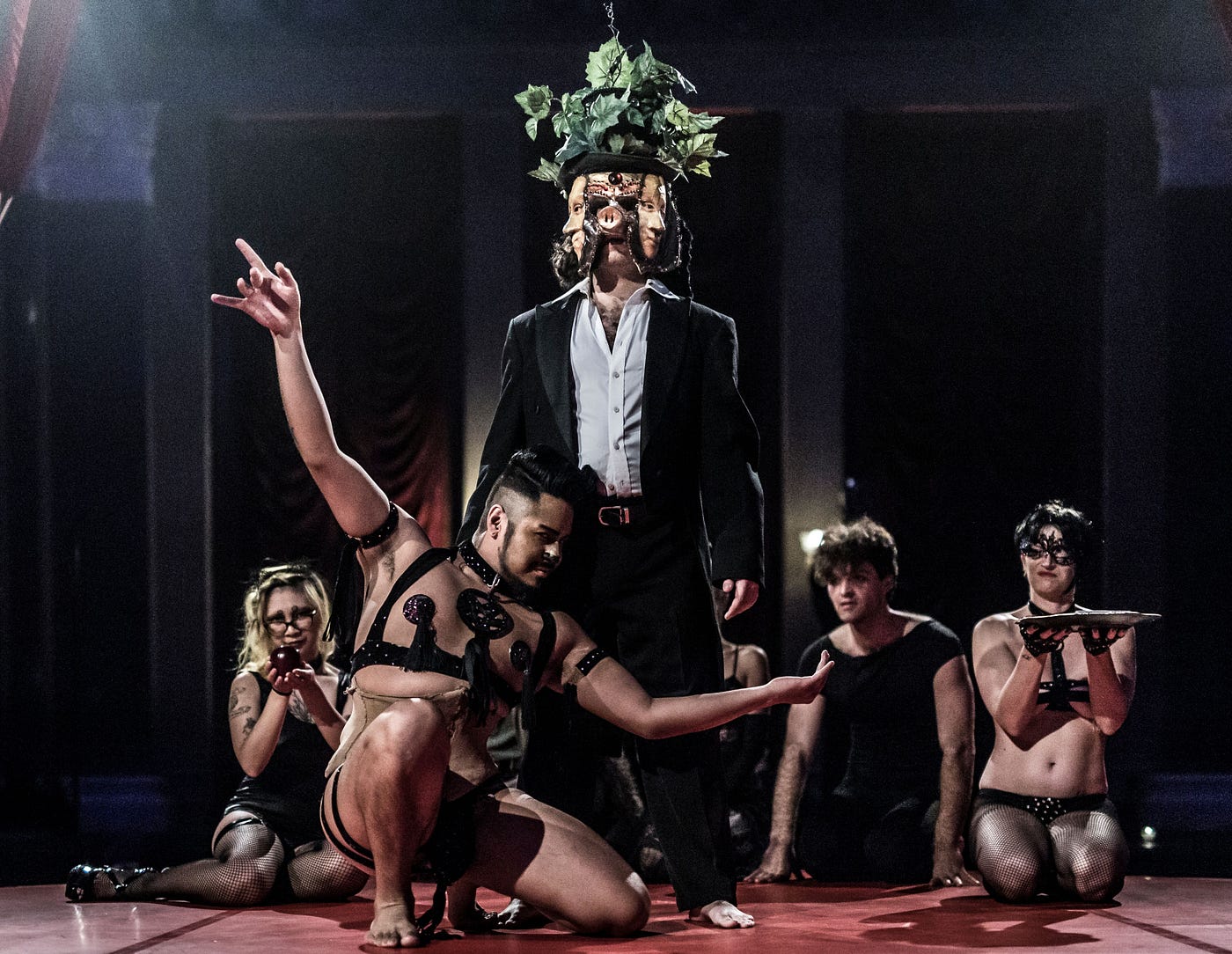
On the lighter side of things, a naked woman (who is half-cow) sits in a bath of her own milk and entreats us to wash her; in exchange, we’ll receive a golden coin she assures will give us sweet dreams. A dryad gives us a pebble bathed in moonlight after we tell her about a good experience we had with nature. A group of mermaids sits on a large rock and snags passersby into conversation with back-handed compliments and snippets of tantalizing gossip. Darker, however, are other encounters such as one with a sobbing, screaming cow-woman who begs us to milk her to relieve the aching pressure in her udders while a large farmer in filthy overalls stares at us menacingly. We find a laboratory full of surgical tools and diagrams explaining the hybridization process and what the animals’ organs will be used for. Darkest of all is a ritualistic, simulated vivisection of a naked woman in which we take turns cutting red strings off her body with a gleaming pair of gigantic golden scissors as she writhes underneath us.
But the link between money and power and the success of a movement is not just backstory for The Illuminati Ball — it’s the reason behind its creation. Cynthia Von Buhler, the creator of The Illuminati Ball and founder of the immersive production company Speakeasy Dollhouse, is an outspoken animal rights activist and vegan. All theatre is, to some extent, a way for writers to communicate their thoughts and opinions, but Von Buhler’s approach is particularly heavy-handed. The plot holds up animal experimentation as something monstrous. The audience is asked to bear witness to the horrors the characters have experienced, to understand the details of how it was done, and to see the animal-human hybrids as deserving of love, respect, and equal treatment. But The Illuminati Ball’s message is not just anti-animal testing. It’s that using animals in any way, whether for testing or for food, is cruelty.
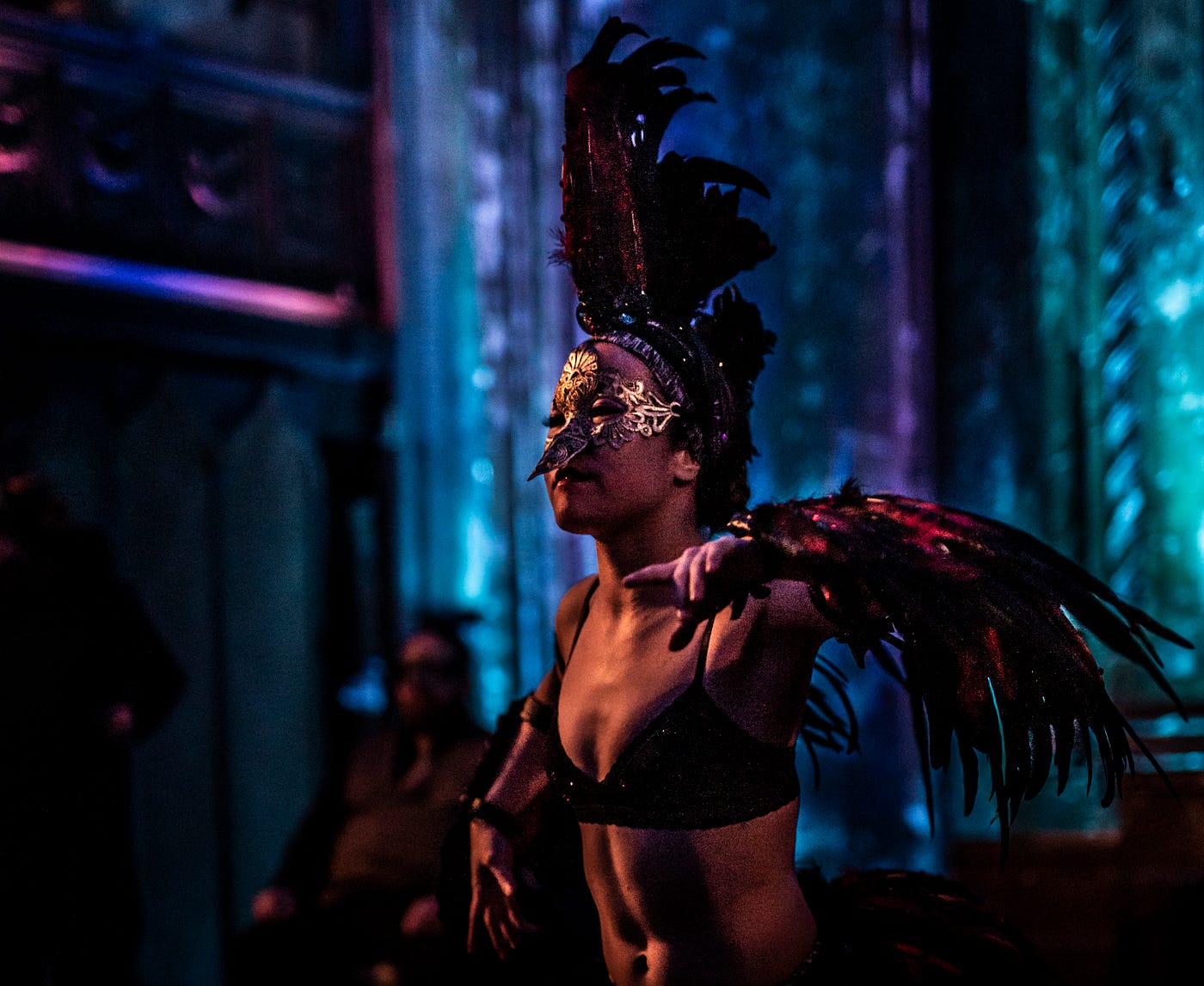
The pro-veganism message is clear and consistent through the entire ball. There is rarely music, and when there is a soundtrack, we hear songs ranging from Lana del Ray to Die Antwoord. But for most of the night, there is just a house beat over a looping track that features a soft, French-accented voice saying things like “Cody…Cody desires answers about existence. Amanda…Amanda desires acceptance, joy, and pleasure….” The message of this voiceover is clear: animals, like humans, are unique and varied beings who deserve to be seen as such. This is true not only for the human-animal hybrids, whose humanoid features make it easier for the audience to accept them as people, but for their fully animal counterparts.
Get Cheyenne Ligon’s stories in your inbox
Join Medium for free to get updates from this writer.
SubscribeSubscribe
The audience is asked to partake in ritual sacrifice throughout the evening: every time a bell rings, we gather in the main hall of the cathedral and eat an item brought around by naked women carrying silver serving trays. This item is always a vegan representative of a body part — a mushroom to represent an ear, a peeled lychee to represent an eye — because, as the Pig King tell us, “true enlightenment never requires taking a life.” When the evening reaches its conclusion, the cast shouts at us in unison to “Be not a cancer on this earth! Leave room for nature!” as we all shuffle out of the cathedral into the chilly October night.
Despite its preachiness, my issues with The Illuminati Ball are not around the intended message. I empathize with Von Buhler. The audience was not the real Illuminati, obviously, but at 250 dollars a ticket, the crowd leaned towards the wealthy and powerful. Much of the usual immersive crowd was priced out, and my fellow party-goers were largely Patrick Bateman-esque Wall Street types and older people with money to burn. Von Buhler is correct in asserting that these are the people, Illuminati or not, who have the money and power to make an impact. Unfortunately, I think the message of The Illuminati Ball was lost on the majority of its participants for two primary reasons.
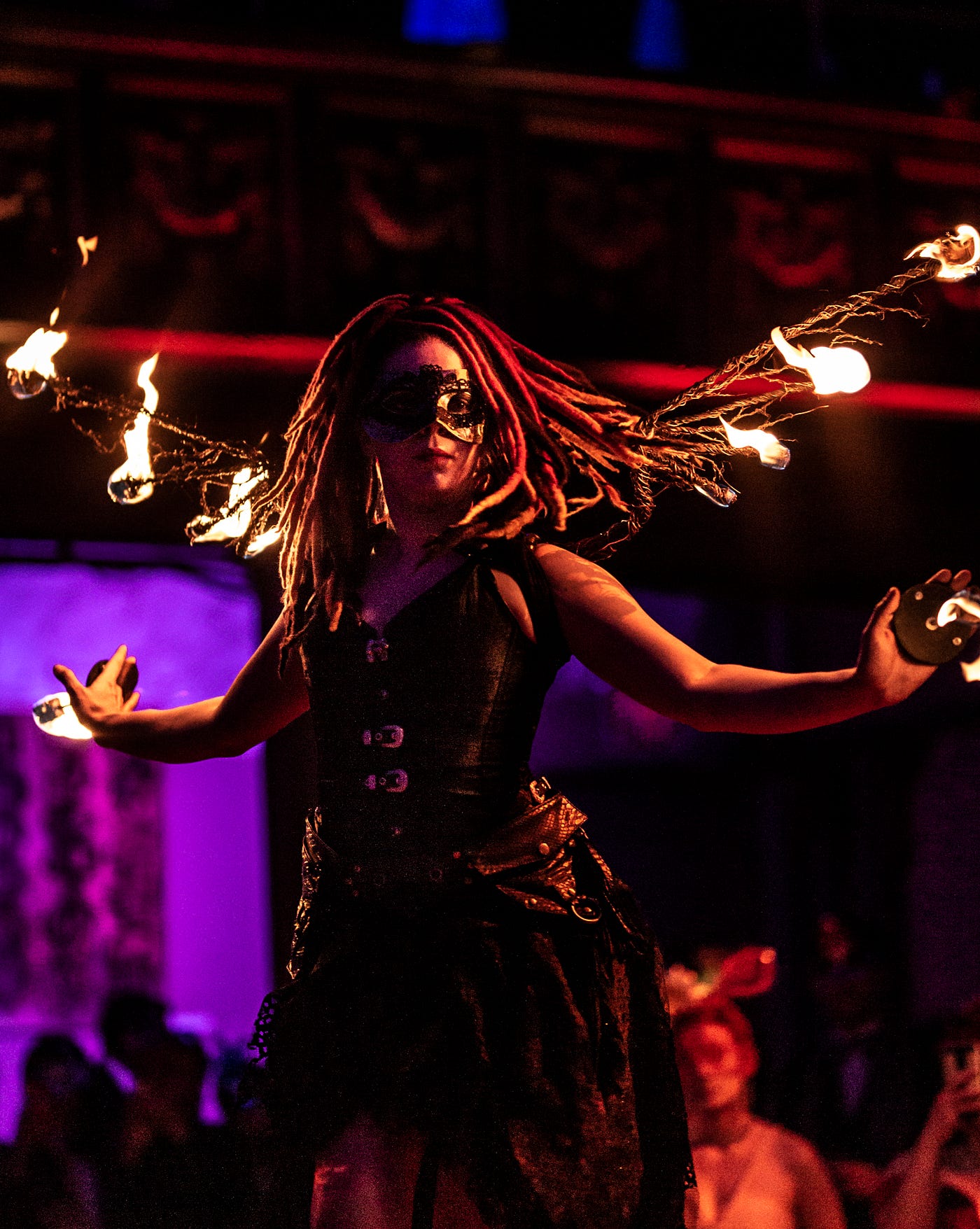
Most importantly, the marketing and promotional materials for the Illuminati Ball were misleading. Photographs of the event show burlesque dancers, fire, and lots of nudity. Descriptions of the performance promise things like “esoteric rituals and optional group bathing.” To be frank, it read like a sex party on paper. When I arrived, I was given a veiled mask and a black silk blindfold. There were several nooks filled with pillows and votive candles that appeared to serve no other purpose except as a place for guests to… hang out. The majority of the cast was nude or nearly nude, wandering the cathedral in nothing but cloaks or bondage gear, or, in the case of some of the pole dancers, nothing but a giant set of bird wings. The night concluded with the Pig King King laying on an altar, stripped naked, covered in bubbles, and set on fire.
I have no issue with nudity or sexuality in immersive theatre when it is used to serve a purpose. Sleep No More, for example, contains a lot of nudity — Macbeth bathing, the notorious witch orgy — but it advances the plot and explains the characters and their motivations. The nudity in The Illuminati Ball, however, was just gratuitous and only served to confuse and distract the audience. The free-flowing alcohol mixed with the sexual objectification of the performers created an atmosphere that felt lecherous. No boundaries between the audience and performers were set (that I was aware of). I watched several people whip out their cellphones and take photos of the dancers’ exposed breasts and vaginas and get too handsy with the cow-women who we were supposed to bathe and “milk.” The worst offense was during the aforementioned vivisection simulation. When it was her turn, one masked participant licked the performer’s breast before cutting one of the red strings off. None of the cast intervened. Those participants that followed her began to touch the performer inappropriately and the ritual devolved into a frenzy reminiscent of Yoko Ono’s “Cut Piece.”
Whose fault is it when the audience behaves badly? The problem of boundaries and inappropriate audience behavior is one that plagues many immersive shows. Sleep No More has a long history of issues with this topic, fueled by the sense of anonymity that masks give the audience and the lack of protections for cast members. At The Illuminati Ball, the overtly sexual atmosphere, masked and drunk participants, and a seemingly complete lack of effort to create boundaries between the cast and audience created a dangerous situation. Aside from being a safety concern, it also distracted from Von Buhler’s intended message.
The other major issue with The Illuminati Ball is that the plot was extremely difficult to follow. Issues with the microphones and sound system made understanding what the characters were saying nearly impossible, and the sandbox structure of the interactions between the cast and the audience meant that only the most determined participants were able to piece together the story. And because the high price point of the ticket drew a crowd that was presumably unfamiliar with immersive theatre, people seemed to be lost and confused. They didn’t know what they were supposed to do, so they defaulted to drinking, gawking, and occasionally behaving badly.
Though there were issues, many things were done well. Roaming the cathedral felt magical and exciting, and I loved stumbling upon strange rituals and encounters. I appreciated the sacrificial tastings, and enjoyed how many opportunities there were to engage with actors and the environment. I just wish those encounters would have been more purposeful for the audience and safe for the actors. Where The Illuminati Ball gets lost is within its own debauchery. Titillation draws in a crowd, to be sure, but too much of it only serves to distract them from why they were invited in the first place. Von Buhler clearly has an eye for creating spectacle and atmosphere. But in this instance, the spectacle obscures her intended animal rights message. Instead of a thought-provoking experience that left me pondering my impact on the environment and my relationship with animals, which is what I believe she intended, The Illuminati Ball just ended up feeling like Eyes Wide Shut spliced with a PETA video.
The Illuminati Ball will return for New Year’s Eve. Tickets are sold out.
NoPro is a labor of love made possible by our generous Patreon backers. Join them today!
In addition to the No Proscenium web site, our podcast, and our newsletters, you can find NoPro on Twitter, Facebook, YouTube, Instagram, in the Facebook community Everything Immersive, and on our Slack forum.
Office facilities provided by Thymele Arts, in Los Angeles, CA.





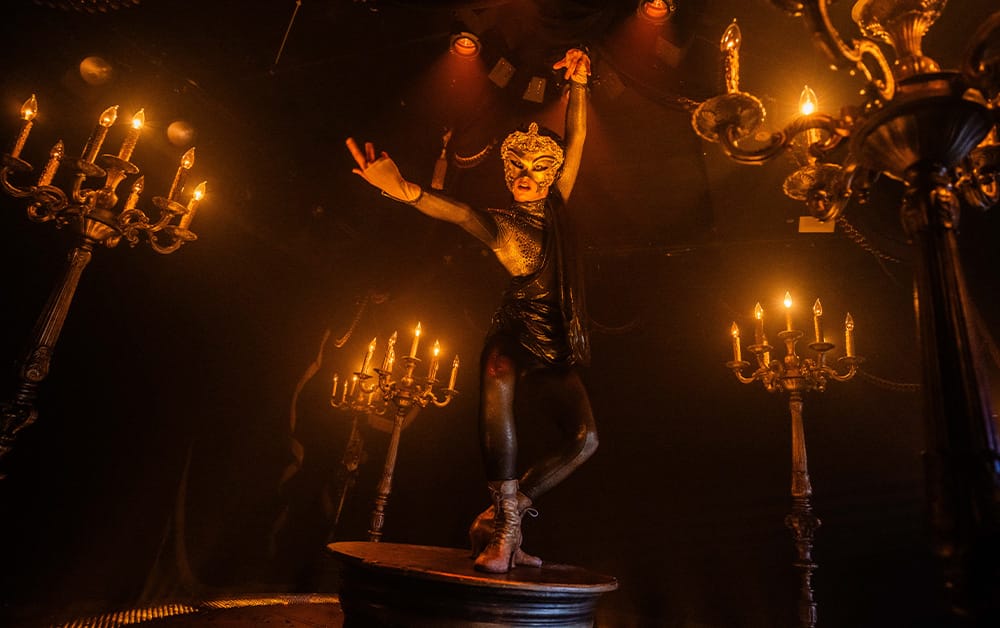













Discussion